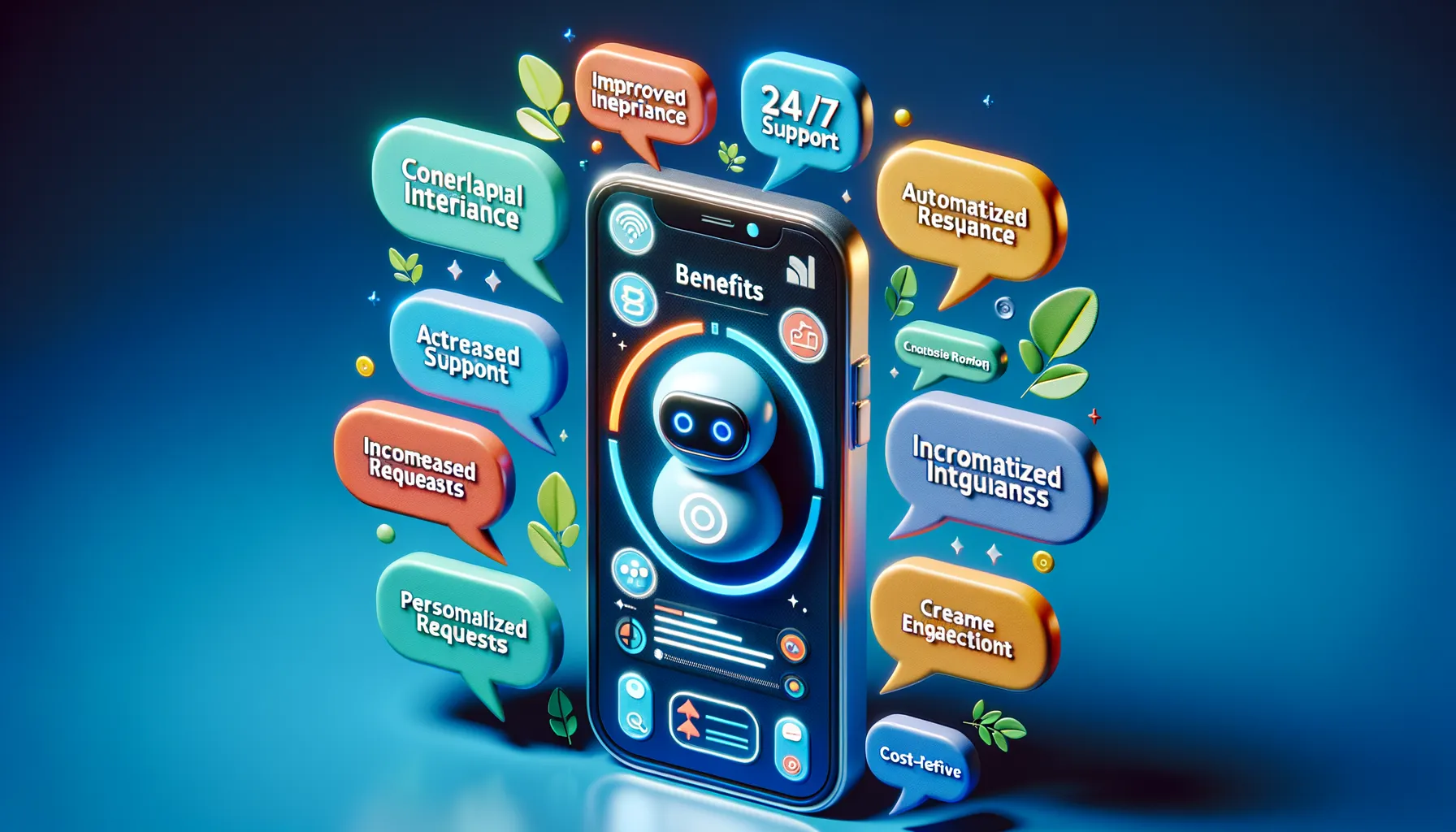Introduction to Conversational Interfaces and AI
A Whole New Way to Connect: Conversational Interfaces
Imagine opening your favorite app and, instead of scrolling through endless menus or fiddling with dozens of buttons, you simply ask it what you need. That’s the magic of conversational interfaces. They transform apps into something far more intuitive—almost like chatting with a helpful friend who just happens to know everything about your needs.
At their heart, conversational interfaces let users interact with apps using natural language—be it through text or voice. But don’t mistake this for just another chatbot. It’s about creating a seamless, human-like interaction that flows effortlessly. Need to find the fastest route home? Done. Want to reorder last week’s groceries? Easy. These systems are powered by AI, making them smarter every time they’re used.
- Think of assistants like Siri, Alexa, or customer-service bots that can manage refunds in seconds.
- They go beyond generic responses, offering personalized suggestions based on your behavior and preferences.
Why AI is the Secret Sauce
What makes these interfaces so powerful is AI. It’s the brain behind the operation, learning how people phrase questions, predict their intent, and adapt over time. Imagine an app that greets you by name, remembers your quirks, and evolves alongside you. That’s not futuristic—it’s already here, thanks to machine learning and natural language processing (NLP).
The beauty of conversational AI lies in its versatility. From e-commerce apps guiding hesitant shoppers to fitness trackers offering support mid-workout, it can fit into virtually any industry. And the best part? It’s not just functional—it feels almost magical.
Key Benefits of Integrating Conversational Interfaces in Mobile Apps

Make Your App Feel Like a Best Friend
Imagine opening a mobile app and feeling like you’re chatting with someone who truly gets you. That’s the magic of conversational interfaces powered by AI. These aren’t just tools; they’re game-changers that elevate user experiences from ordinary to extraordinary.
Why? Because they make apps feel more human. Instead of users searching through endless menus, they can simply *ask* for what they need. Need to book a table for two tomorrow night? A chatbot in your app will not only understand but might even suggest the perfect spot based on your past choices.
Now, let’s highlight some standout benefits:
- 24/7 assistance: No waiting. Ever. Conversational AI is always on, ready to help at any hour of the day.
- Hyper-personalized interactions: Each conversation learns from your users, creating tailored responses that build loyalty.
- Efficiency on steroids: Skip the manual work—AI automates repetitive tasks so your users (and team) save time and energy.
Build Deeper Connections Through Simplicity
We’re creatures of conversation. By integrating conversational AI, you’re tapping into something deeply intuitive. Think about how apps like Duolingo or virtual assistants like Siri keep users coming back—it’s that seamless blend of functionality and personality. The result? Users stick around longer, engage more, and leave with a smile.
Technologies and Tools for Building AI-Powered Conversational Interfaces

The Essential AI Ingredients for Conversational Magic
Building an AI-powered conversational interface is like baking the ultimate cake: you need the right mix of tools and technologies to get that perfect, engaging interaction. Let’s talk about some of the secret ingredients that make it all come together.
First up, we have Natural Language Processing (NLP). This is your conversational interface’s ability to “understand” what users are saying. Tools like Google Dialogflow or Microsoft’s LUIS bring NLP to life, letting your app grasp user intent, decode slang, and even handle messy grammar. Think of them as the ears and brain of your system.
Then there’s machine learning models, which evolve your bot’s responses over time. TensorFlow and PyTorch are absolute powerhouses here. They help your AI learn from data, just like you’d learn from experience. But the real kicker? They allow for responses that feel dynamic and intelligent, not canned or robotic.
Here’s where things really get exciting: APIs add a certain “spice” to your creation. Want your bot to check the weather or book appointments? Integrate APIs like Twilio or OpenAI’s ChatGPT for capabilities that stretch beyond imagination.
- Speech-to-text engines: Crucial for apps that rely on voice input. Think Google Speech API or IBM Watson.
- Cloud platforms: AWS and Azure are like the oven for this metaphorical cake—scalable and reliable for deployment.
Designing User-Centric Conversations with Precision
Technology is only half the story; crafting a memorable conversational interface involves putting yourself in your users’ shoes. Picture this: your user just tapped on your mobile app after a long day. Do they really want a robotic dialogue riddled with “Sorry, I didn’t get that”? Nope! They want human-like fluency.
This is where AI-driven analytics truly shines. Platforms like Botpress collect every ounce of interaction data, helping you fine-tune conversations. Analyze drop-offs, common questions, or areas of confusion to create a smoother, friendlier experience.
While you’re at it, don’t forget to invest in sentiment analysis tools. These gems, available via tools like IBM Watson Tone Analyzer, can detect frustration or delight in user messages, allowing your bot to adapt its tone accordingly. A frustrated customer might get calming reassurance, while an excited one receives an equally enthusiastic reply.
Step-by-Step Guide to Designing a Conversational Interface

Start with Your User in Mind
Designing a conversational interface is like planning a meaningful conversation with an old friend—you need to *really* understand who they are and what they need. Begin by identifying your audience: Who are they? What problems are they trying to solve? Create detailed user personas to get inside their heads. Imagine this: a busy parent opening your app to quickly reorder groceries or a curious traveler using your chatbot to find local attractions. Their goals will shape every micro-interaction.
Next, map out your conversation flow. Think of it as scripting a play. How does the user begin? What pathways can they take? Use tools like **flowcharts** or prototyping software to visualize this journey—every question, answer, and potential “Oops, I didn’t get that” moment. The goal? Keep it intuitive and frustration-free.
Add Depth and Personality
Your conversational interface isn’t a robot in disguise—it’s a brand ambassador! Infuse it with personality, but don’t overdo it. A weather app might crack a light joke when announcing rain, while a healthcare app should stick to empathetic, clear language.
Here’s a cheat sheet for crafting engaging dialogs:
- Use short, relatable responses. Nobody likes walls of text.
- Include fallback messages like “Hmm, I didn’t catch that. Could you clarify?”
- Avoid being too formal or too casual—match the tone to your audience.
Test everything. No, seriously—run your design through usability tests with real users. Watch how they interact, note where they stumble, and fine-tune until the experience feels seamless.
Best Practices and Future Trends in Conversational AI for Mobile Apps

Crafting Seamless Conversations: Tried-and-True Techniques
Building conversational AI for mobile apps isn’t just about programming smart bots—it’s about creating meaningful, human-like interactions that feel natural. A great conversation should flow like a dance—graceful, intuitive, and engaging. Start by focusing on your app’s specific audience. For instance, a fitness tracking app might use motivational language (“Keep going! You’ve crushed 80% of your daily goal!”), while a banking app prioritizes clarity and professionalism.
Here’s where brilliance begins:
- Design with empathy: Think about your user’s mood and needs at every touchpoint. Are they frustrated? Excited? Tired?
- Prioritize simplicity: Keep responses concise yet warm—nobody wants to read paragraphs when ordering coffee via an app!
- Anticipate failures: When the AI doesn’t understand, reply gracefully (“Oops! Can you rephrase that?”).
Emerging Trends You Can’t Ignore
The future of conversational AI is hurtling toward incredible innovations. Imagine voice-cloning assistants that learn to sound like you do, or hyper-personalized AI that remembers how you take your morning latte. Voice input is becoming the norm, making apps hands-free and more accessible. And let’s not forget the rise of multi-modal interactions: combining text, voice, and even images for richer conversations.
The most exciting frontier? Emotional intelligence. Conversational AI is learning to sense emotions in tone and word choice, responding with empathy. Picture this: your AI booking assistant notices stress in your voice and offers soothing words or extra options to make planning less overwhelming. The future is here—are you ready to embrace it?
